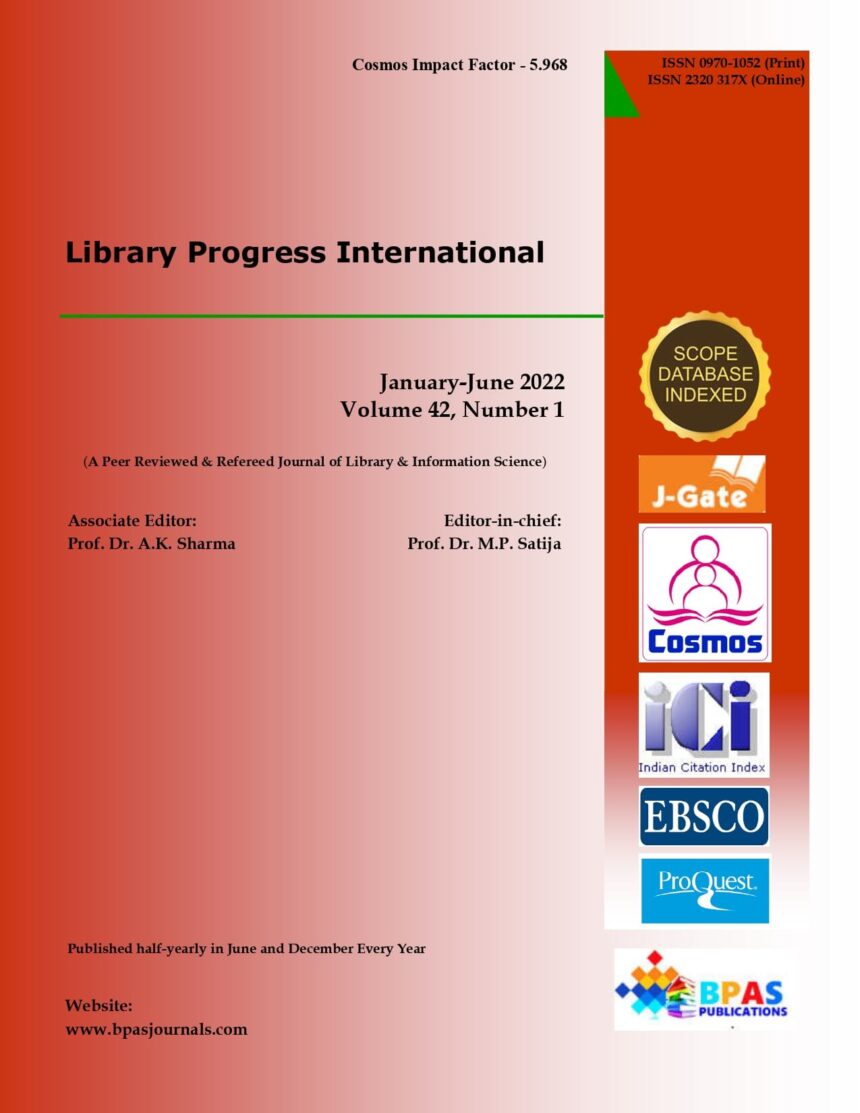A Research on Modern Digital Libraries in Tamil Nadu with Special Reference to Design, Development and Impact
DOI:
https://doi.org/10.48165/Keywords:
Digital libraries, Revolutionary, Design and KnowledgeAbstract
Today we live in a world economy and one in which great distances can be covered much more swiftly than 100 years ago. In the same way, the communication of information has moved beyond print and now comprises digital text and images. Libraries, as traditional benefactors of data and knowledge, are undergoing particularly challenging situations in transitioning from ownership of materials to accessing knowledge and information from networked, electronic sources, from providing users with the information that they are looking for to training users how to find the facts for themselves, and from moving from an environment that has changed slowly over the preceding 150 years to one in which change is necessary, constant, and innovative. The historical backdrop of digital libraries is rich and shifted in light of the fact that the "digital library" idea isn't so much another thought as an advancing origination of contribution from numerous panels. Digital libraries are co-operative structures with sorted out accumulations of data. As of recent times, there has been a rise of subject-based digital libraries with connectivity to the Web. Numerous individuals have added to the thought, and everybody appears to have their differences as a priority. Digital libraries have developed from apparently static to increasingly unique and intuitive vaults of client contributed assets with various applications. The structure of intelligent classifications, including digital libraries, is regularly encouraged by what innovation makes promising. In a client run configuration, structure give emphasis to clients, their errands, and necessities. Since digital libraries mean various things to various individuals, the structure of digital libraries is, accordingly, ward of the impression of the drive/functionality of digital libraries.
Downloads
References
Digital Library Federation. (2008). A working definition of digital library [1998]. Retrieved August 30, 2008, from http://www.diglib.org/ about/dldefinition.htm
Fantin, M., & Girardello, G. (2008). Digital literacy and cultural mediations to the digital divide. In P.C. Rivoltella (Ed.), Digital Literacy: Tools and Methodologies for Information Society (pp. 310–340). Hershey, PA: IGI Publishing.
Candela, L., Castelli, D., Pagano, P., & Simi, M. (2006). OpenDLibG: Extending OpenDLib by ex-ploiting a gLite grid infrastructure. In Proceeding of the 10th European Conference on Research and Advanced Technology for Digital Libraries, ECDL 2006 (LNCS, pp.) Berlin:
Springer-Verlag.
Krishnakumar P and Nirmala P.J. (2014). Websites of Deemed Universities in Tamilnadu: An analysis of library content, Indian Journal of Information Sources and Services, Vol.4, Issue 1, pp 38-44
Sarwesh Pareek and Dinesh K Gupta. (2013). Academic library websites in Rajasthan: An analysis of content, Library philosophy and practice, pp1-22
Bertot, J., Jaeger, P. T., & Grimes, J. M. (2011). Promoting Transparency and Accountability through ICTs, Social Media, and Collaborative E-Government. Transforming Government: People, Process and Policy, 6, 78-91.

